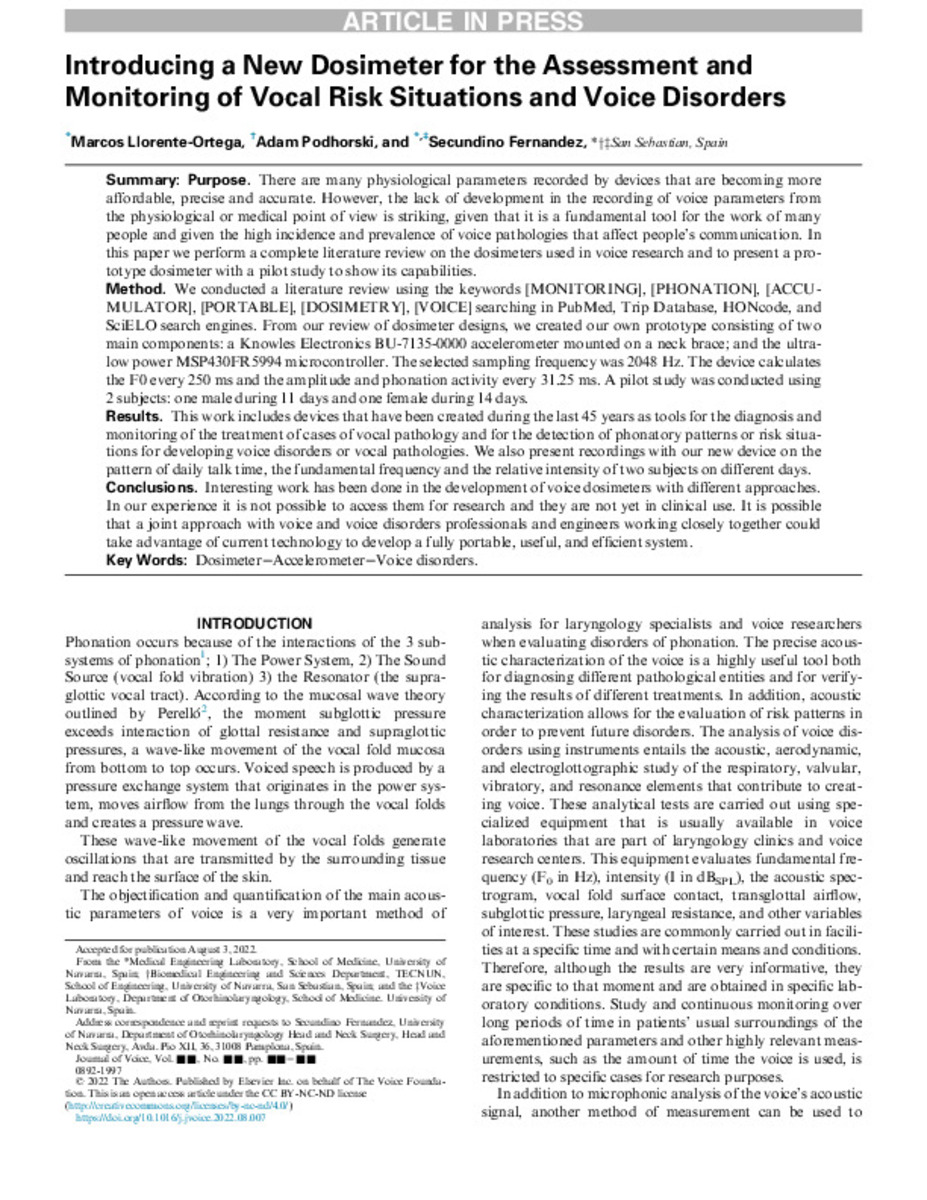Introducing a new dosimeter for the assessment and monitoring of vocal risk situations and voice disorders
Keywords:
Dosimeter
Accelerometer
Voice disorders
Note:
This is an open access article under the CC BY-NC-ND license
Citation:
Llorente-Ortega, M. (Marcos); Podhorski, A. (Adam); Fernández, S. (Secundino). "Introducing a new dosimeter for the assessment and monitoring of vocal risk situations and voice disorders". Journal of Voice. 36, 2022,
Statistics and impact
0 citas en

0 citas en

Items in Dadun are protected by copyright, with all rights reserved, unless otherwise indicated.







